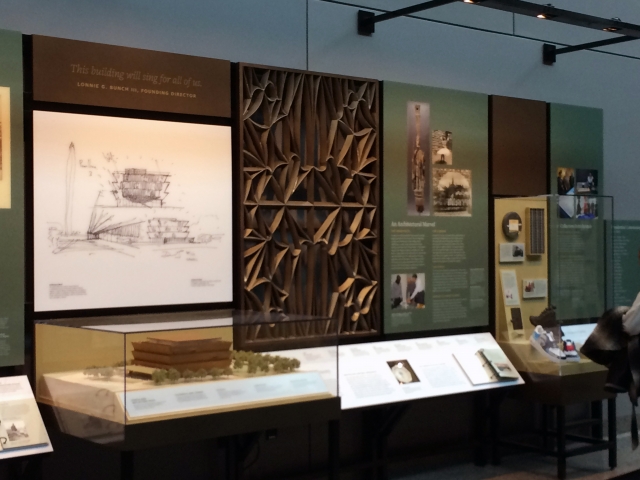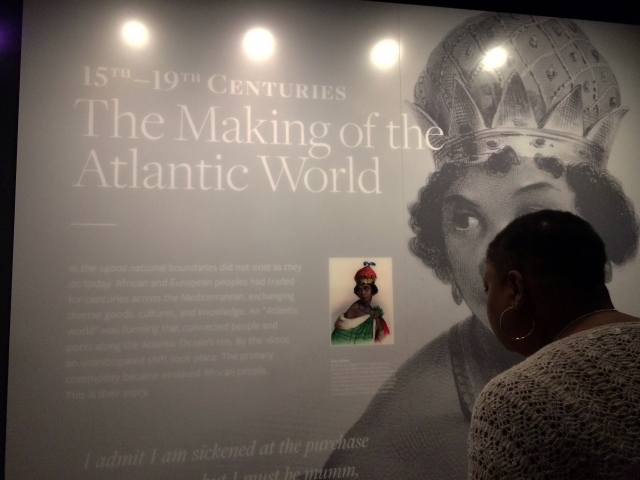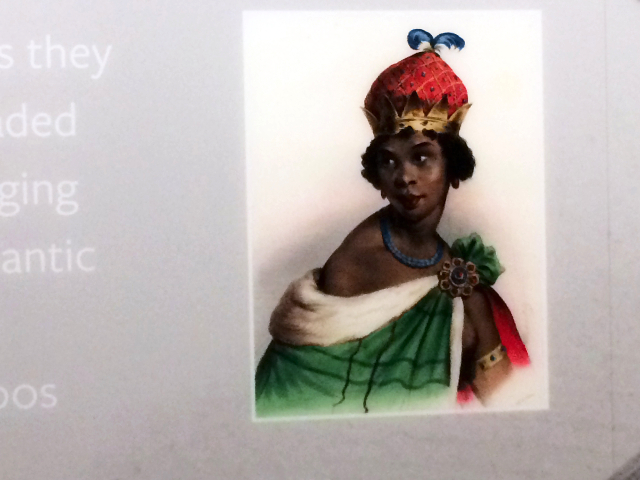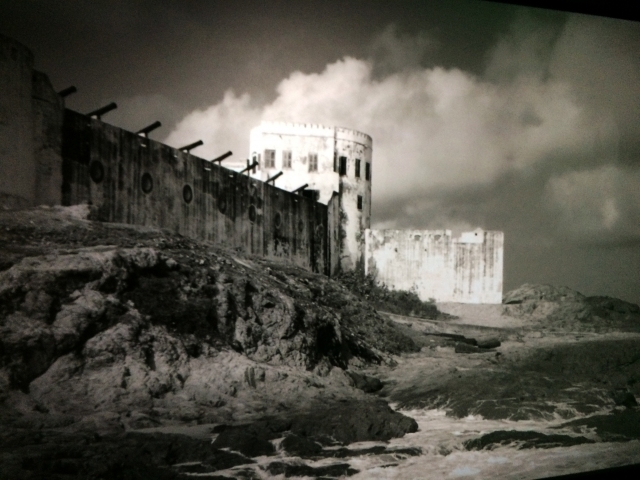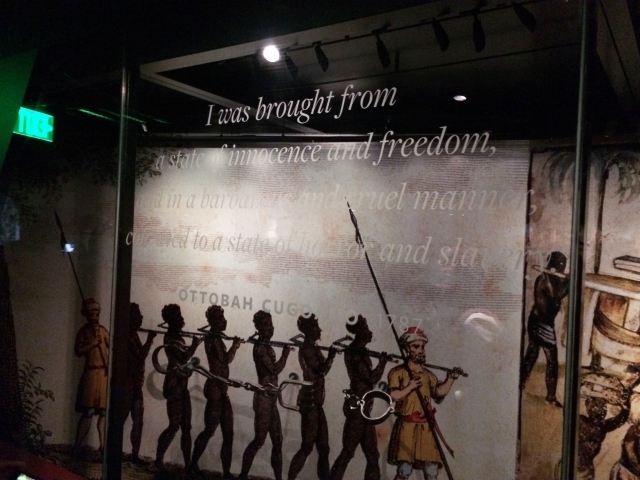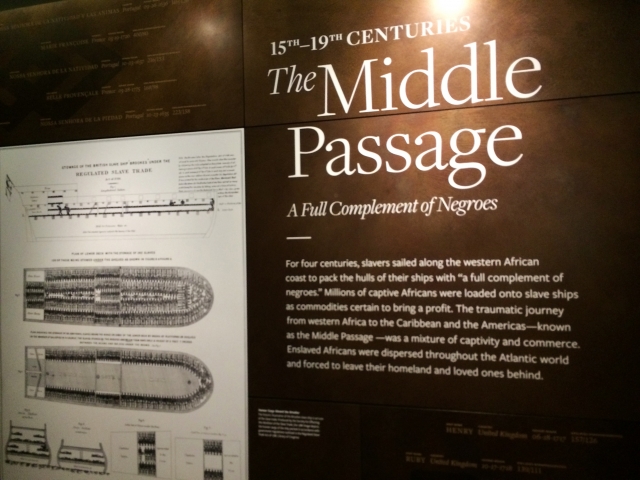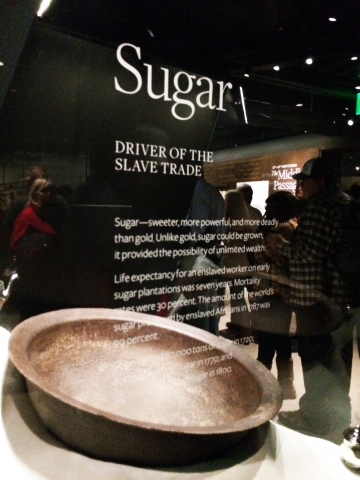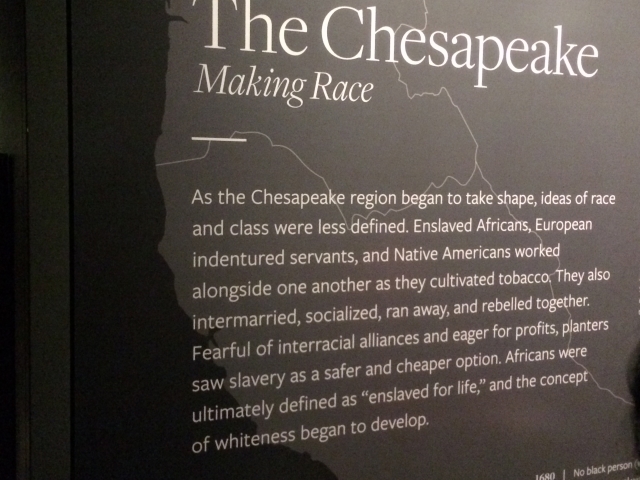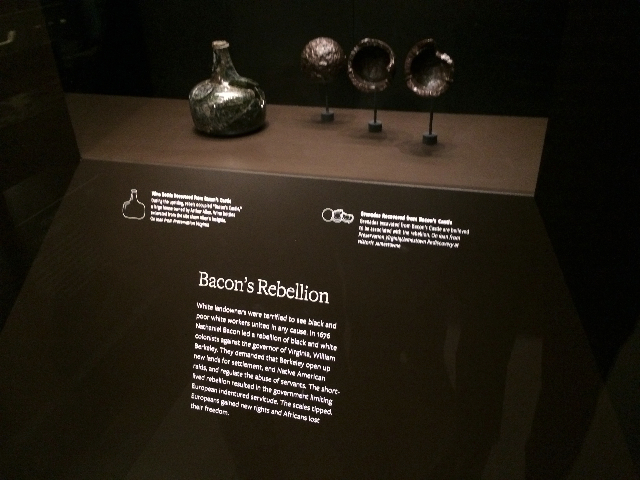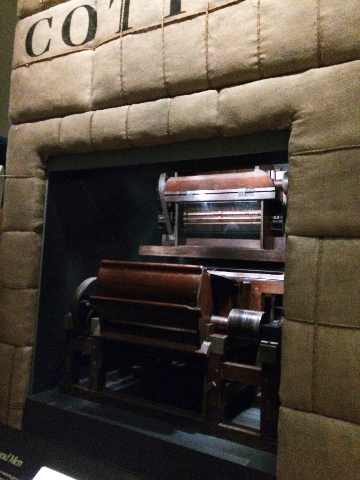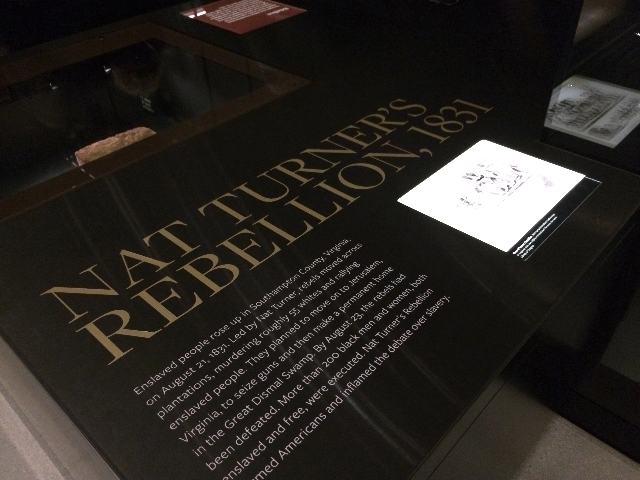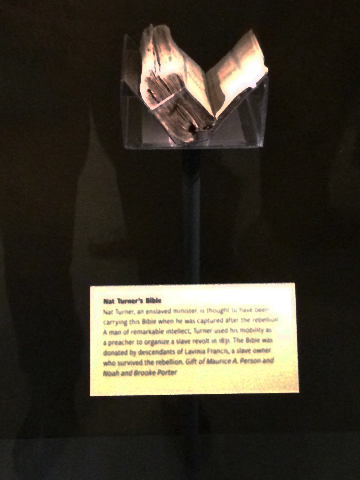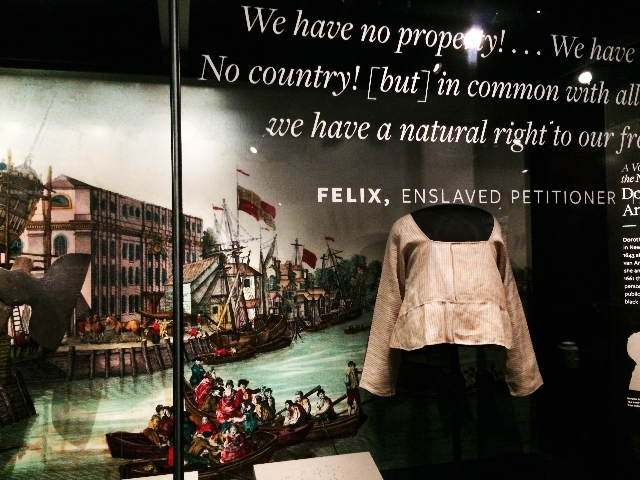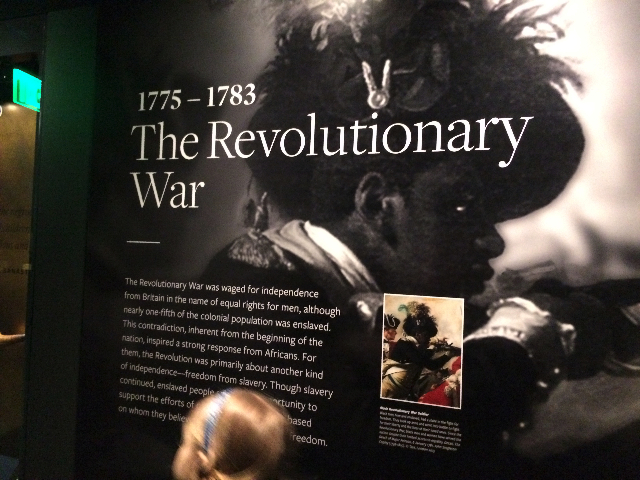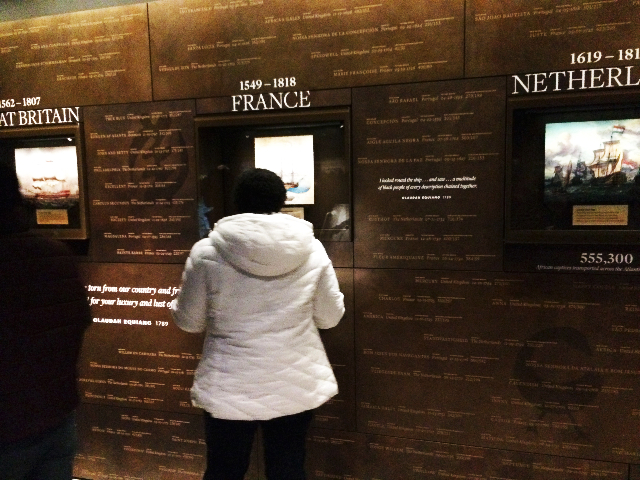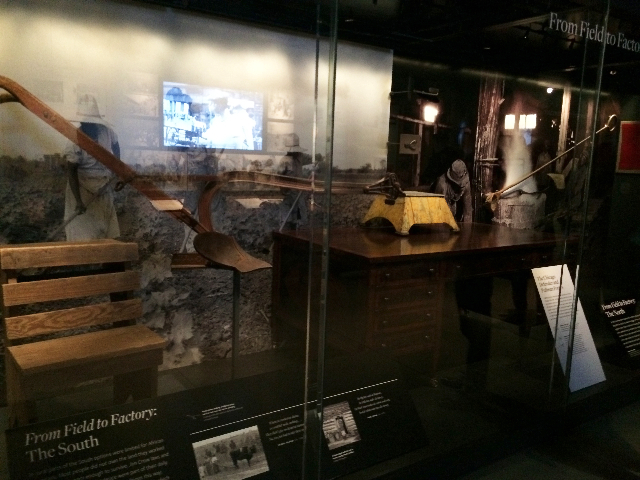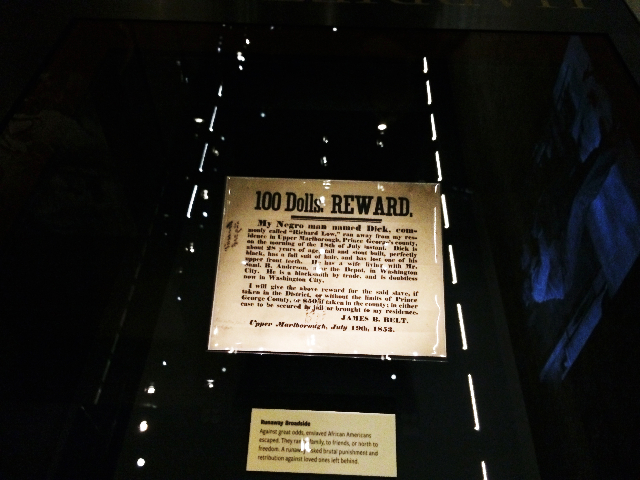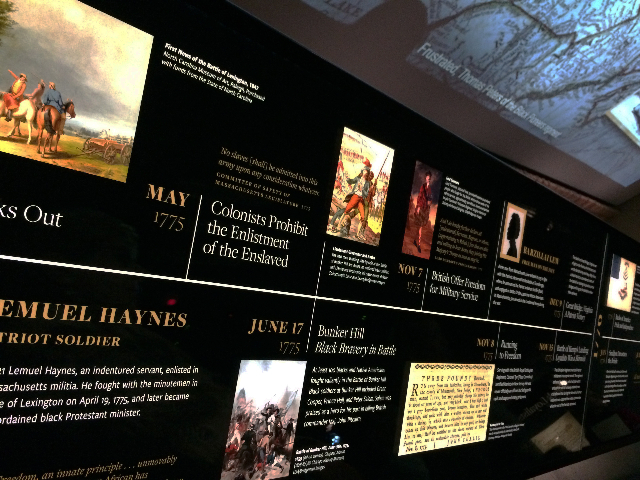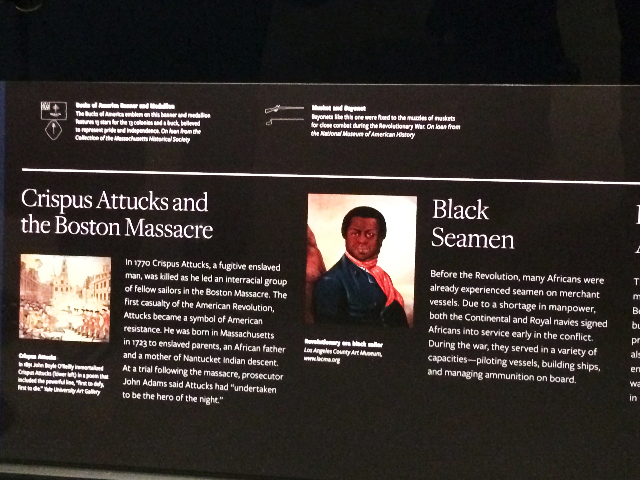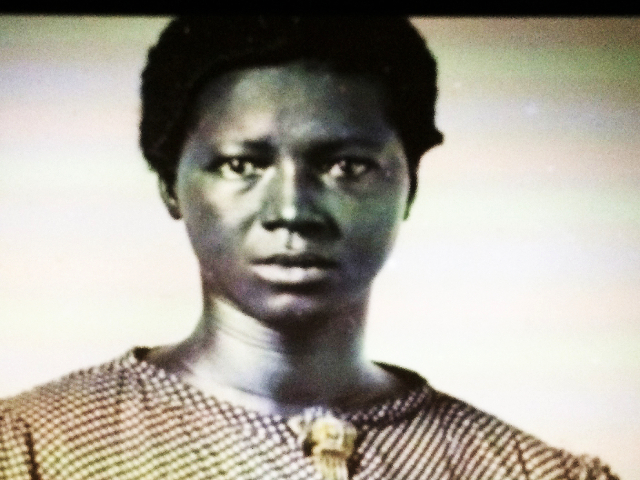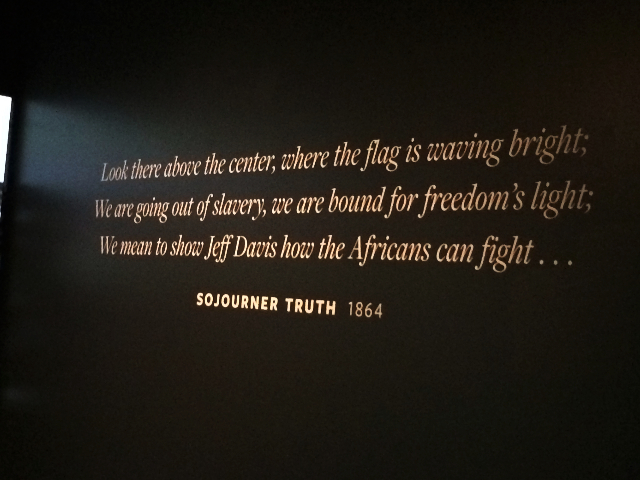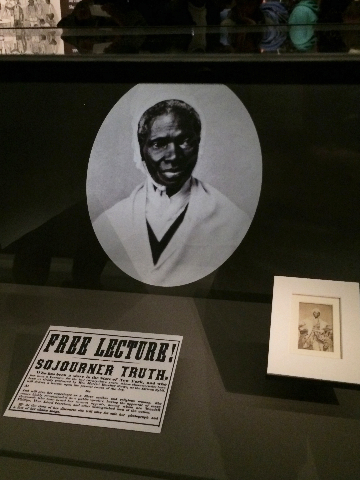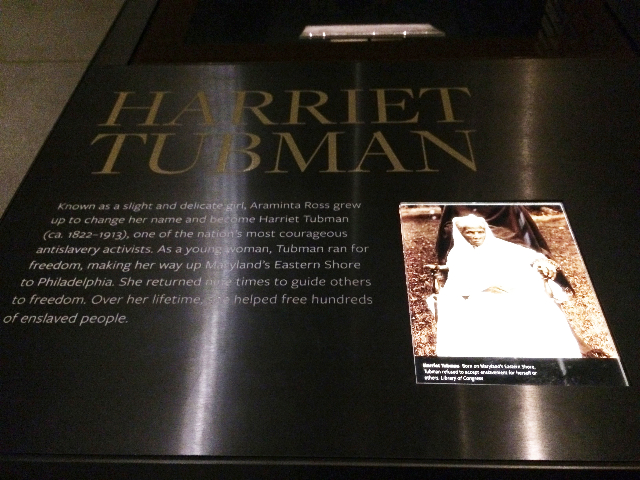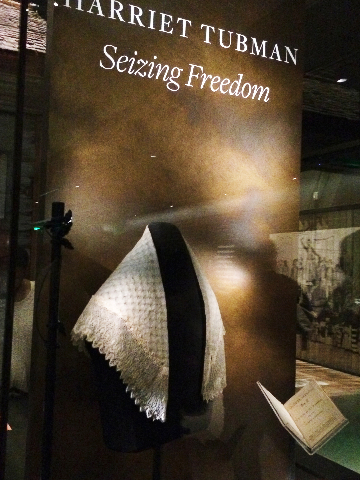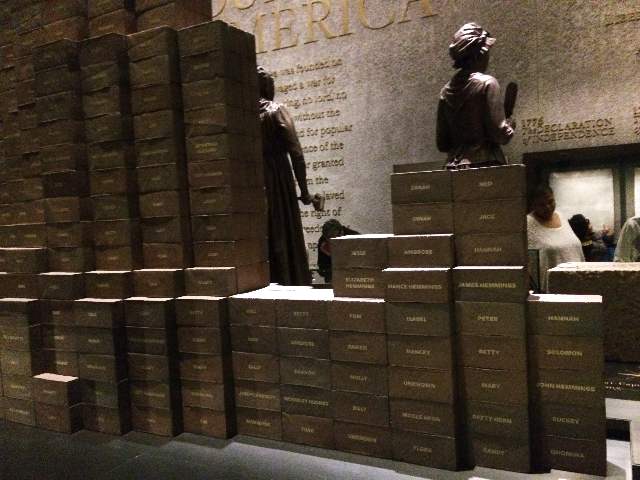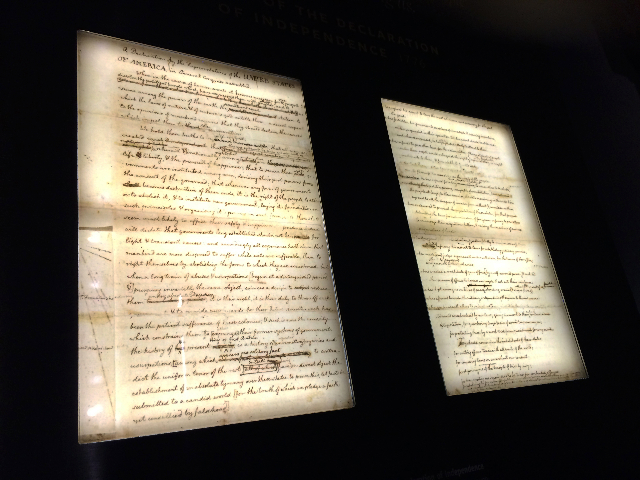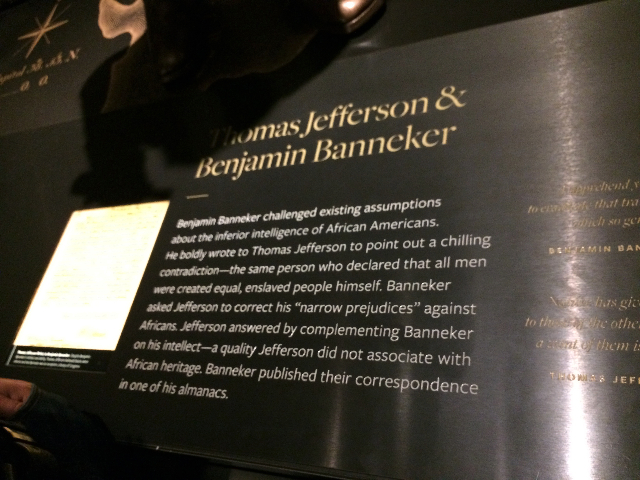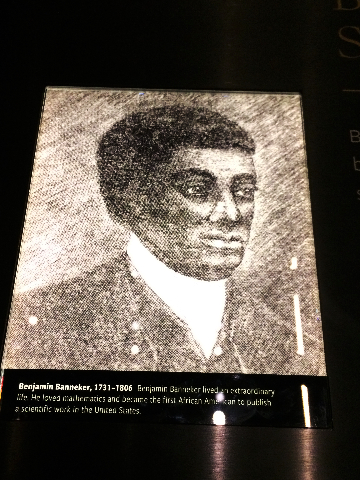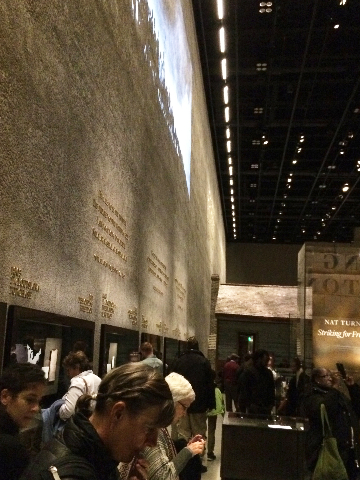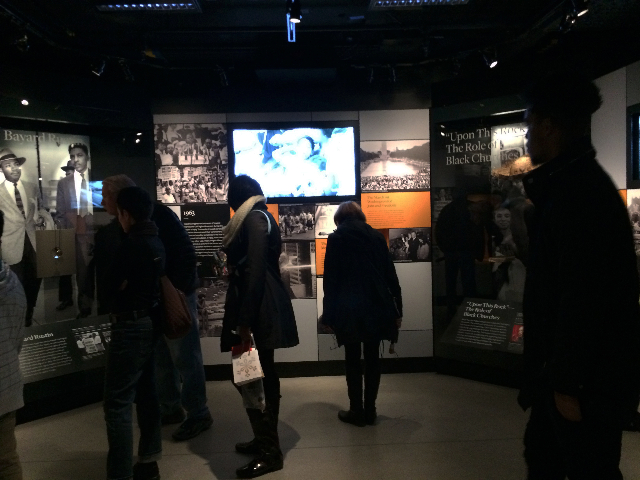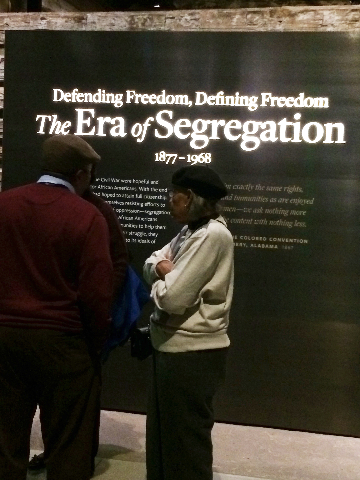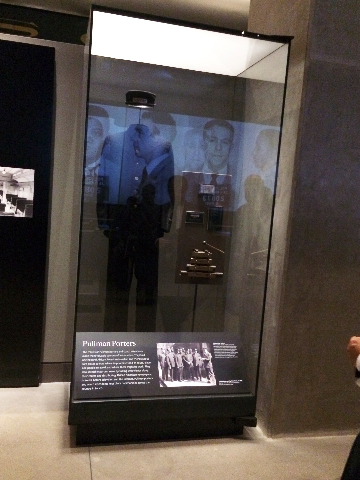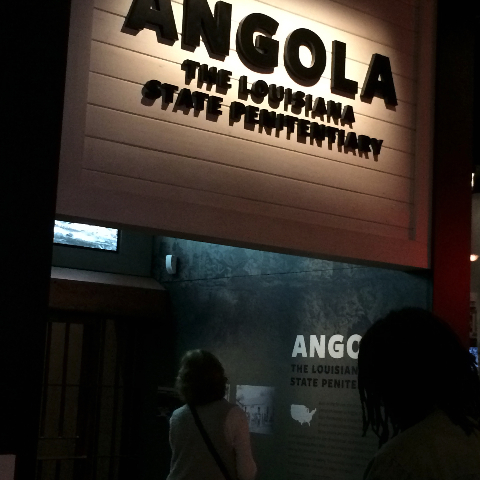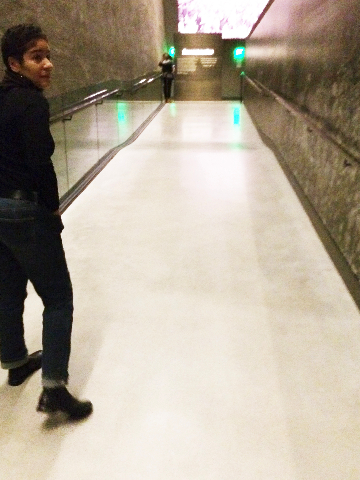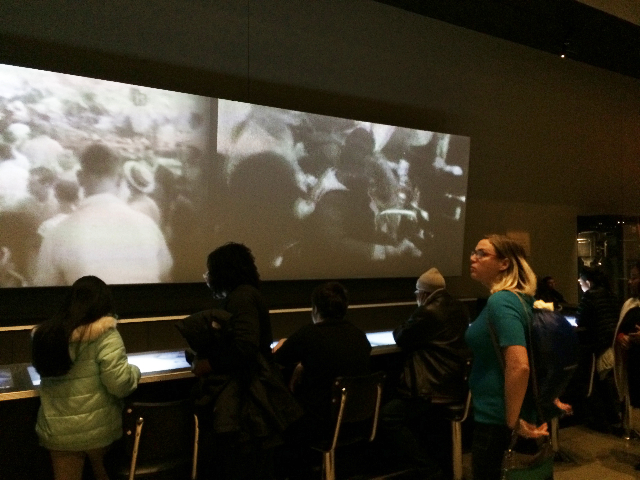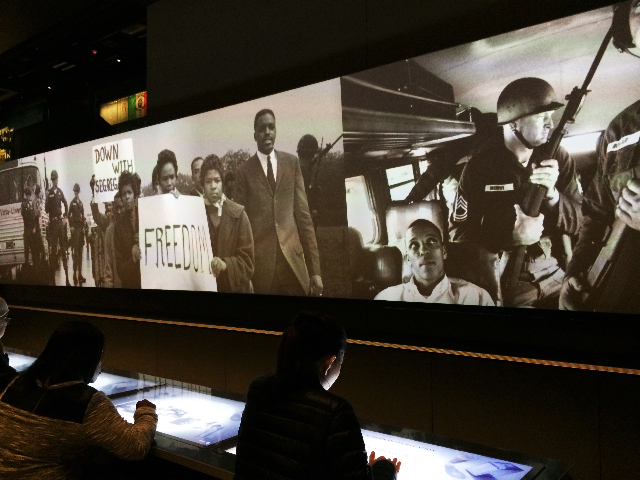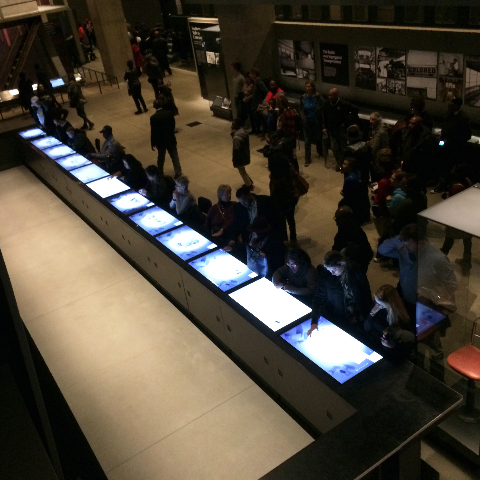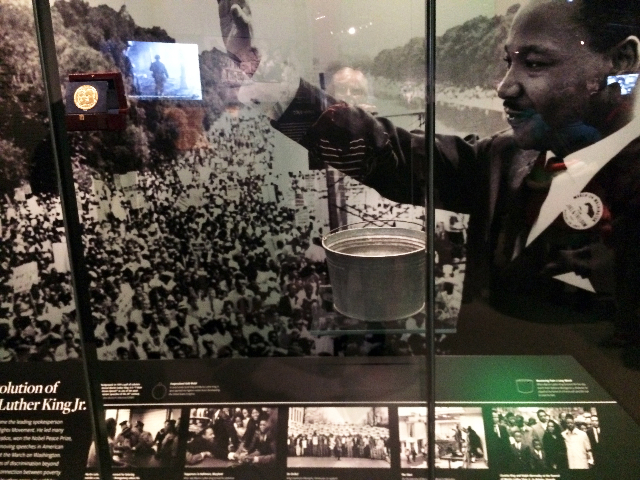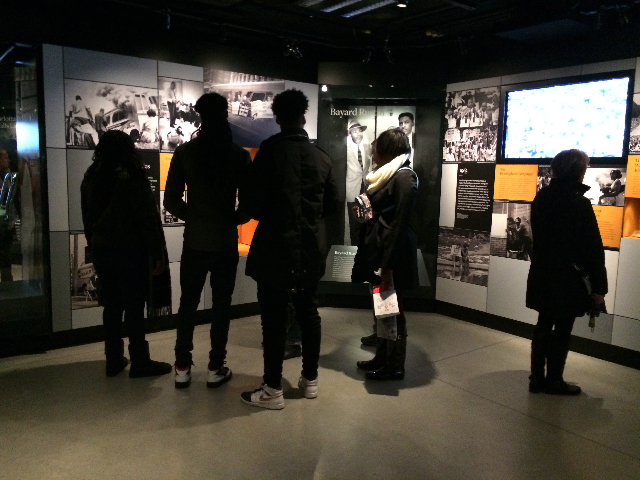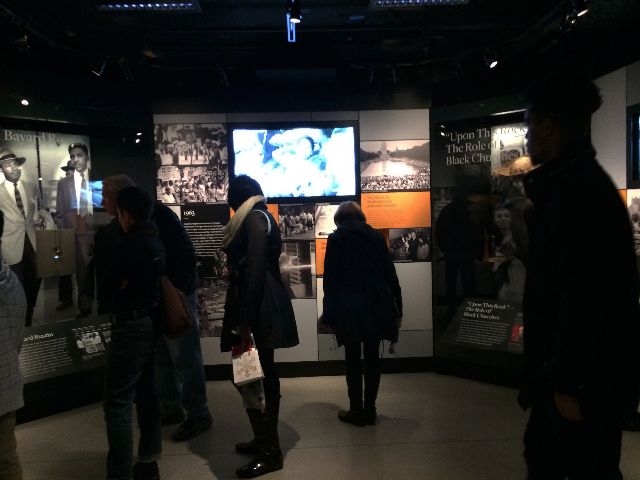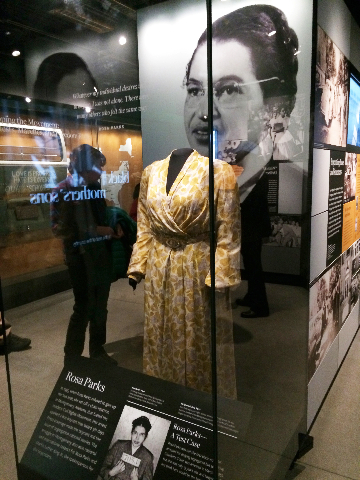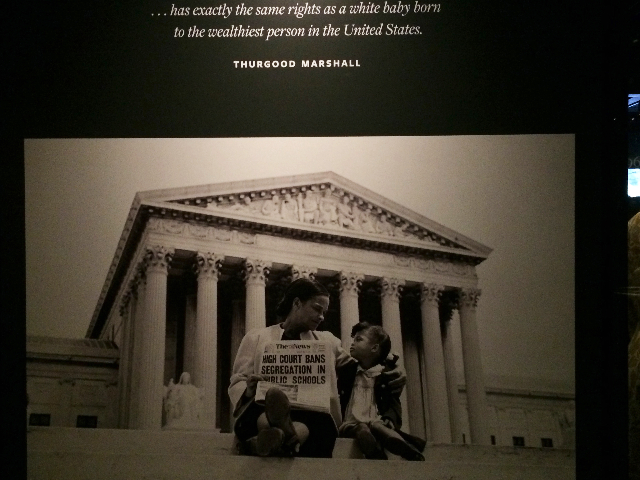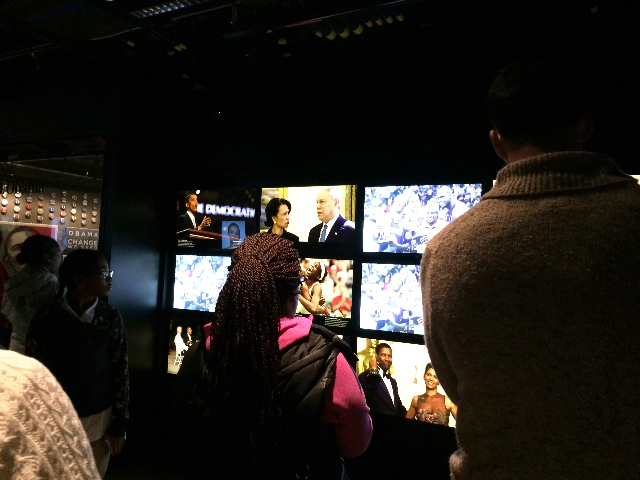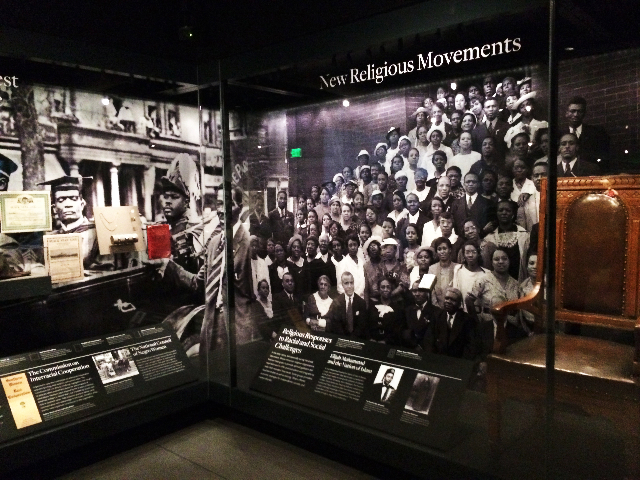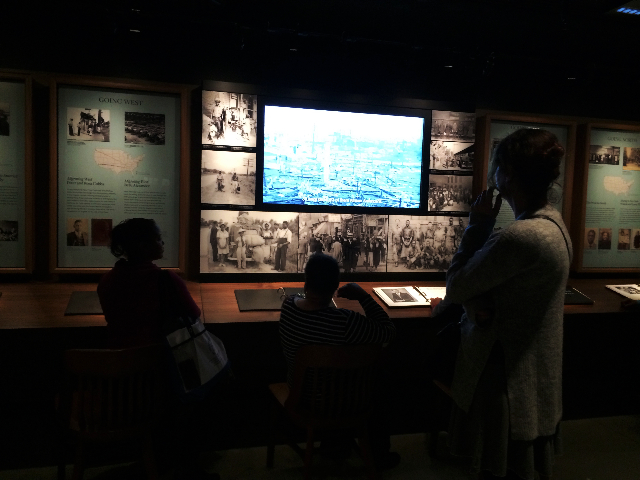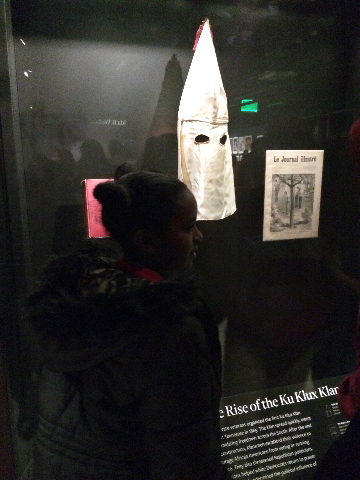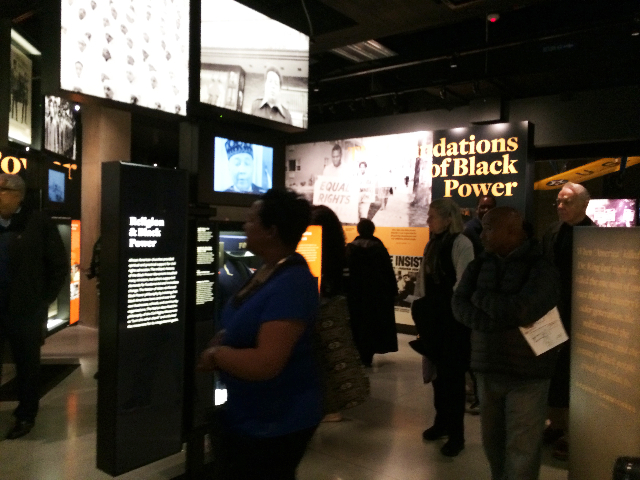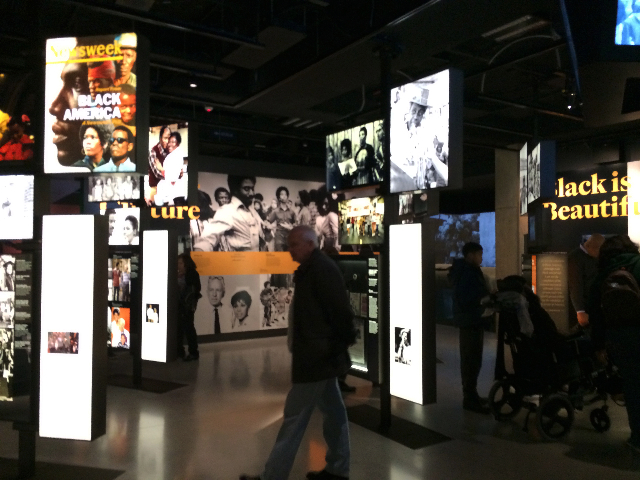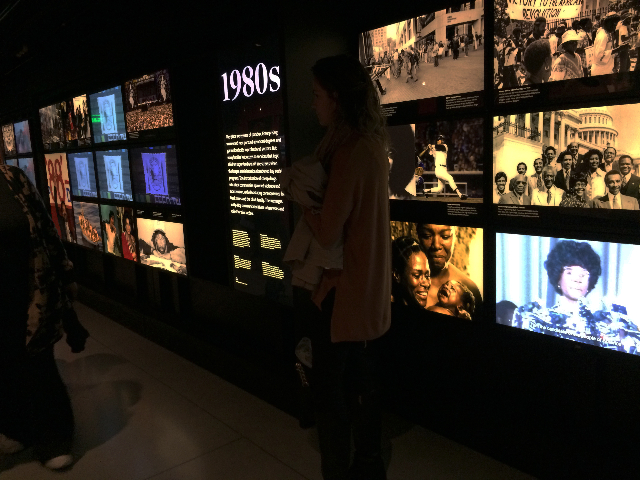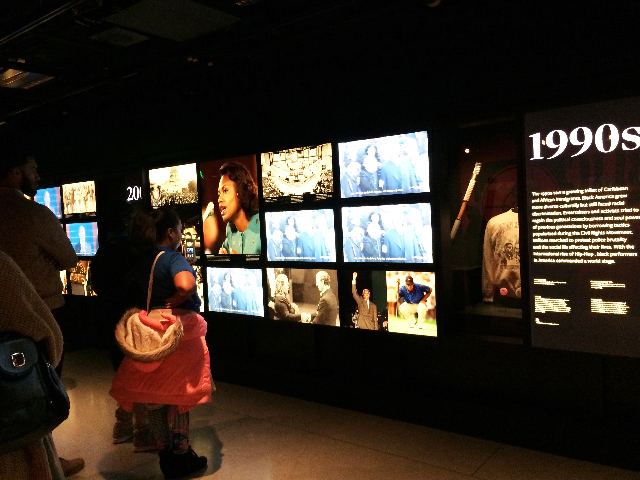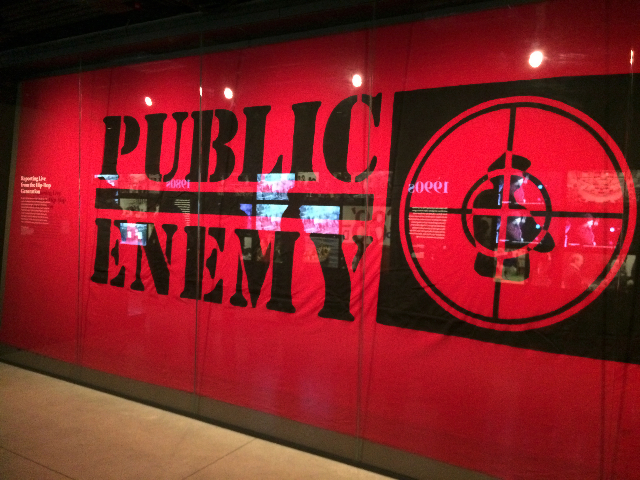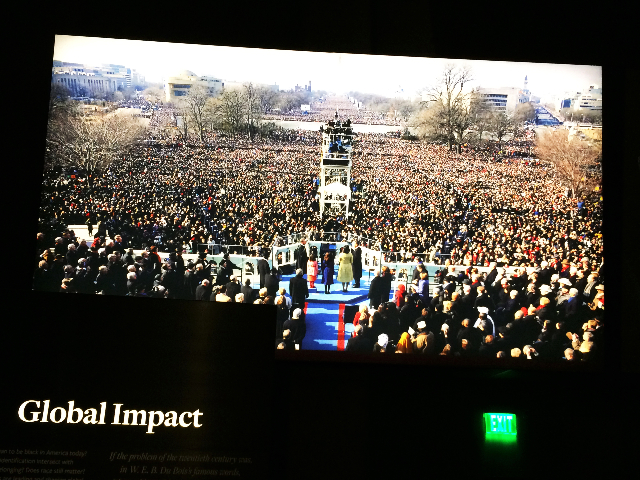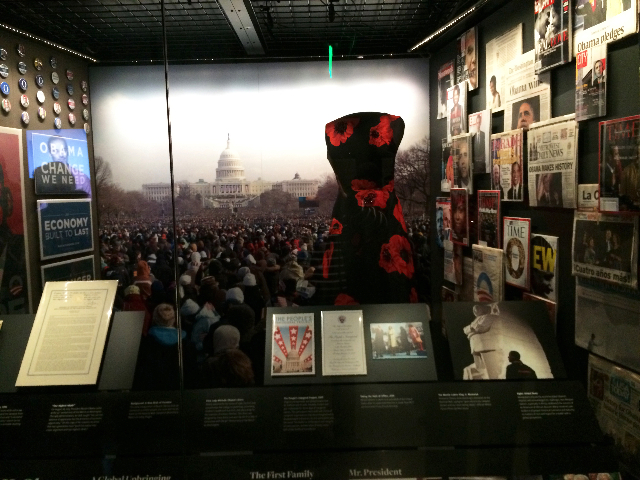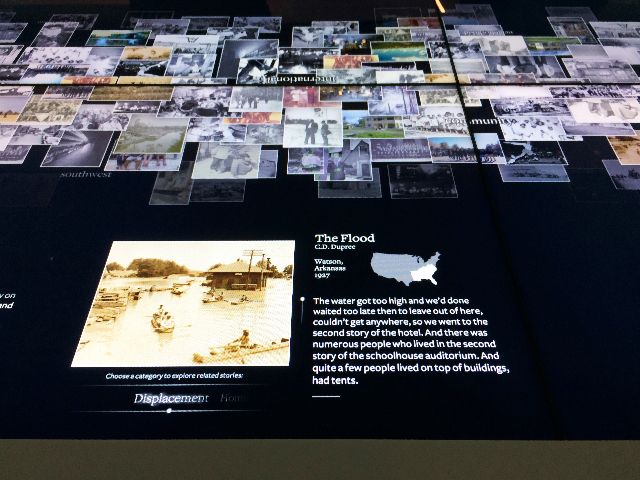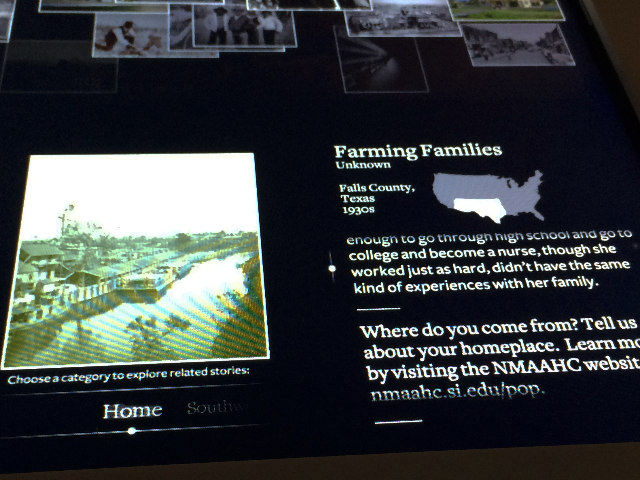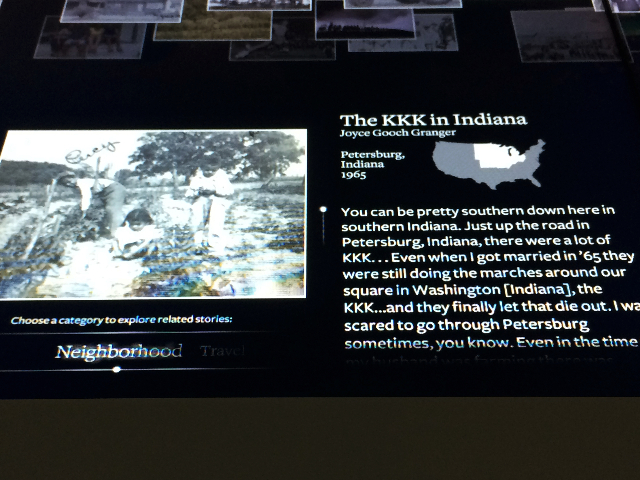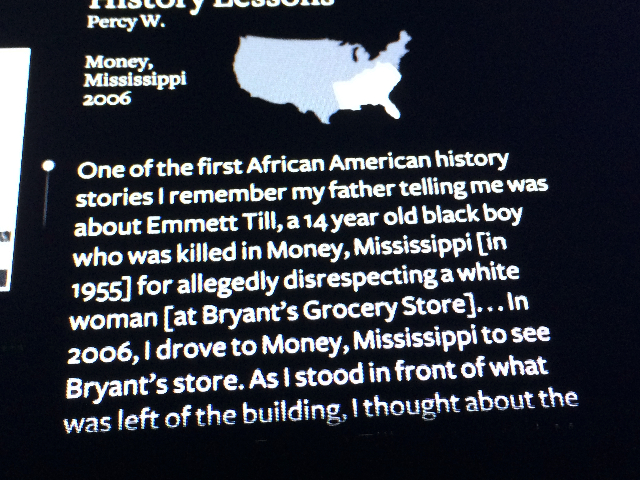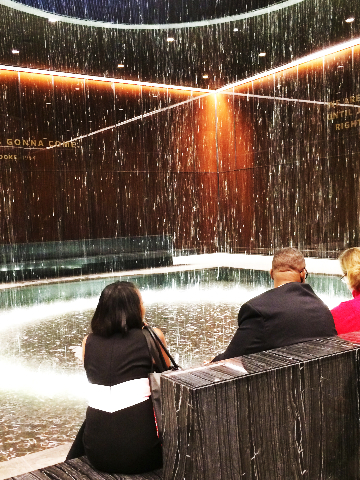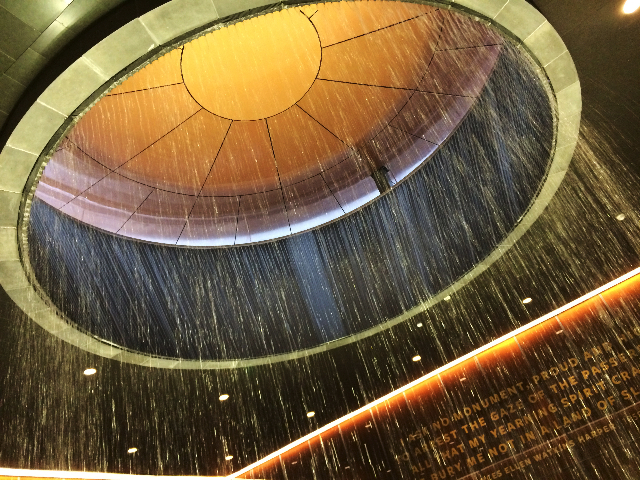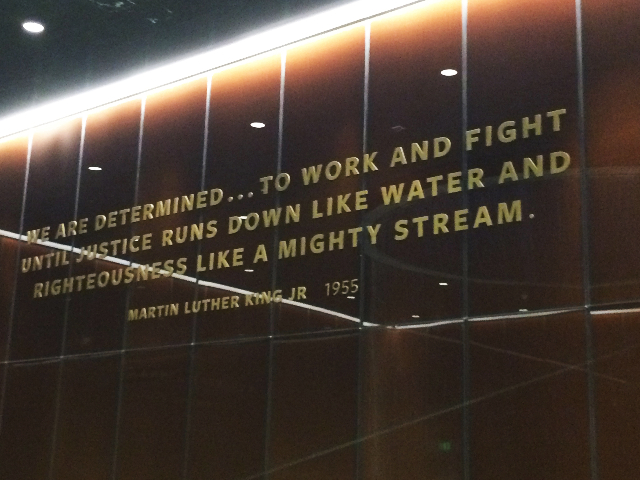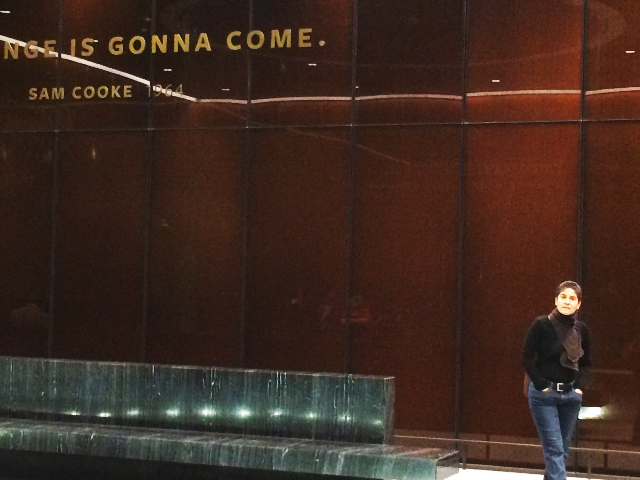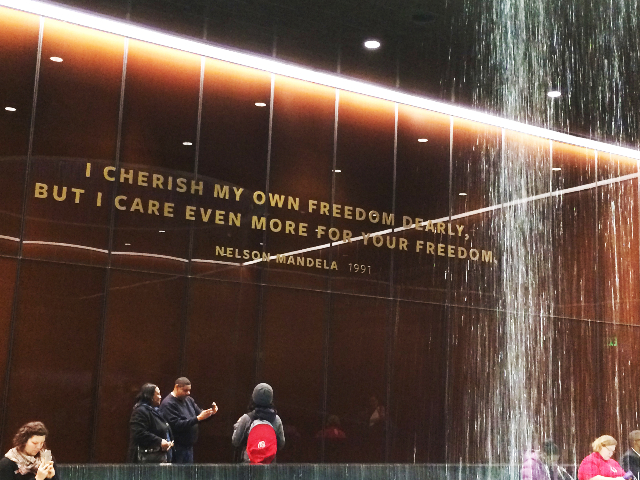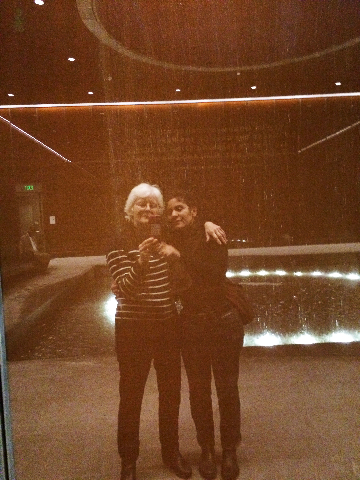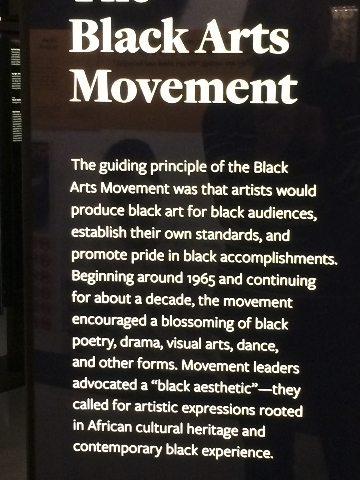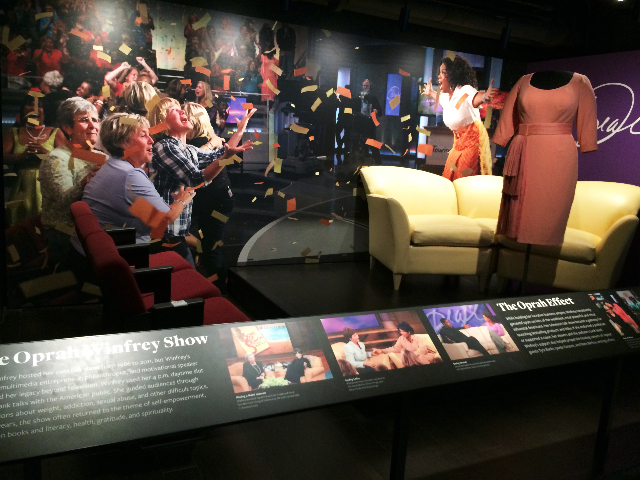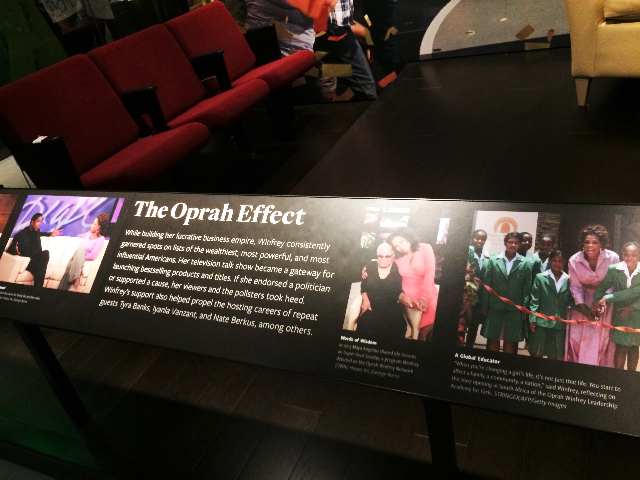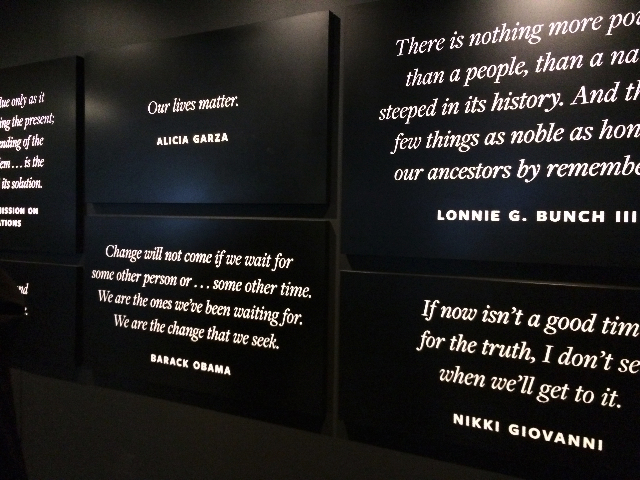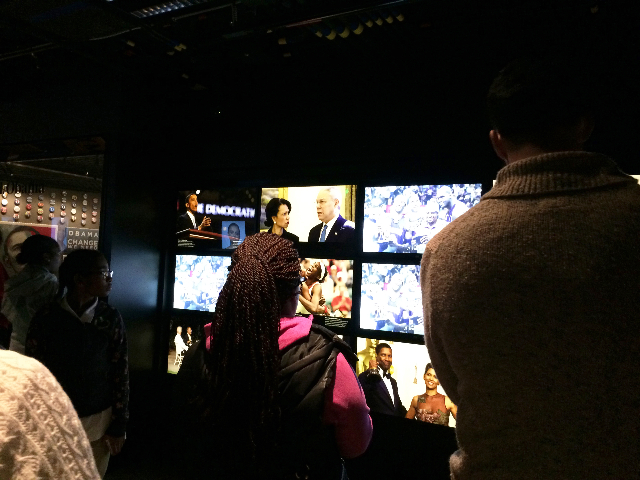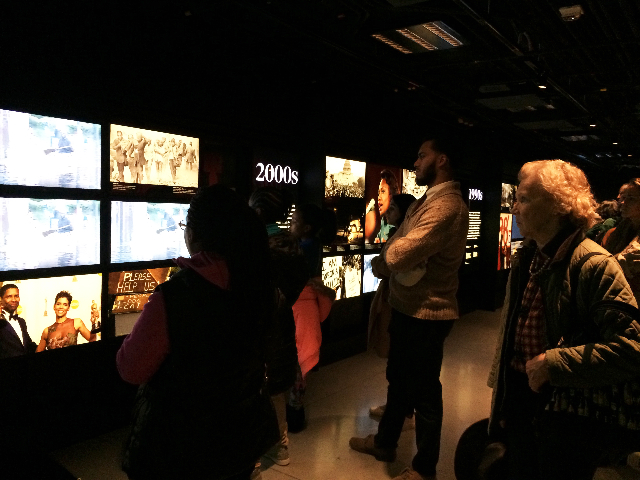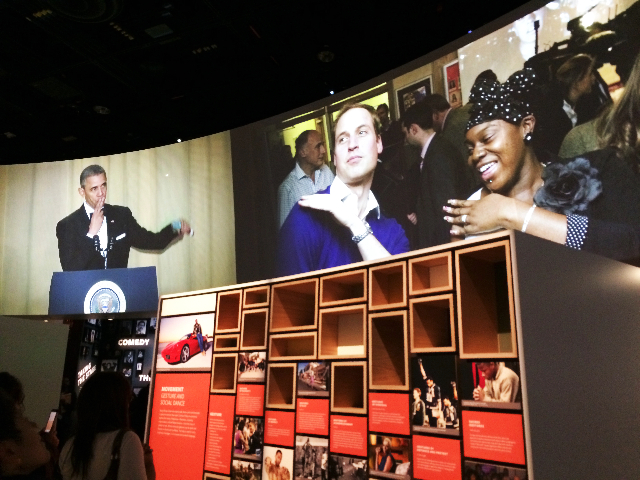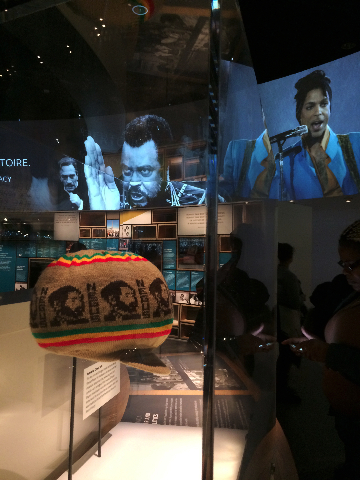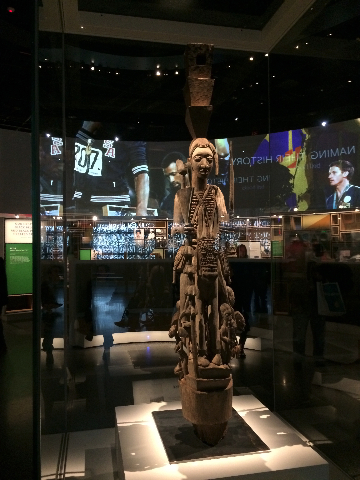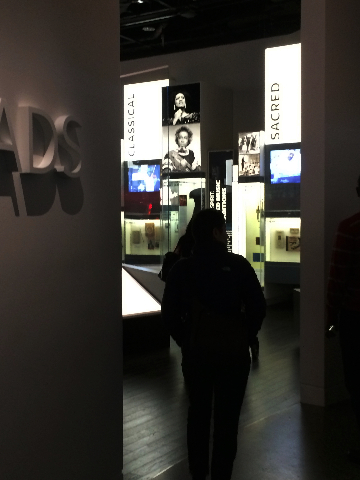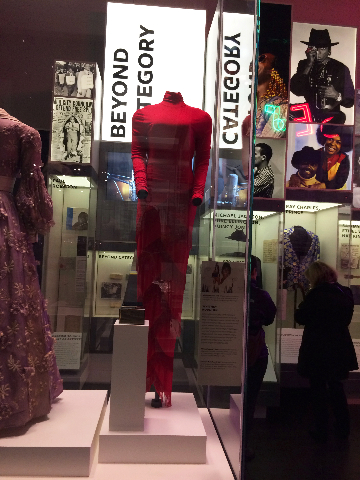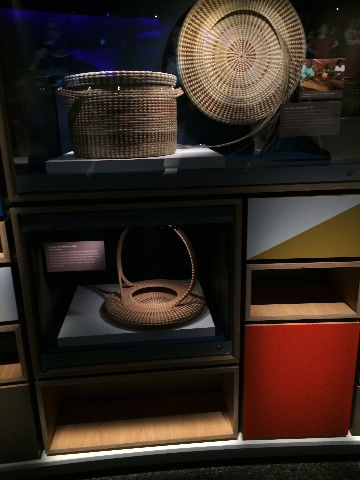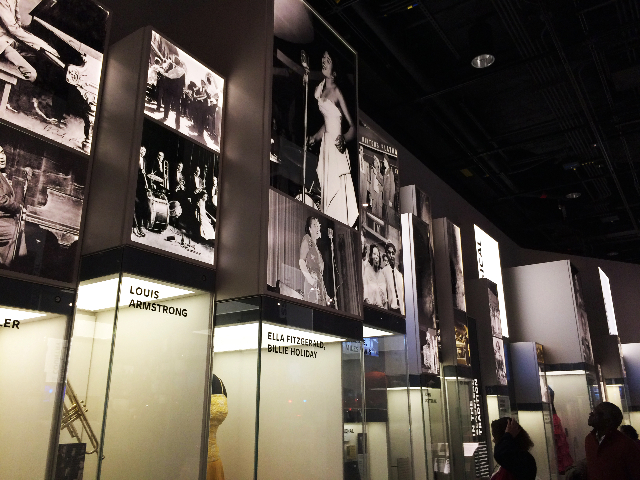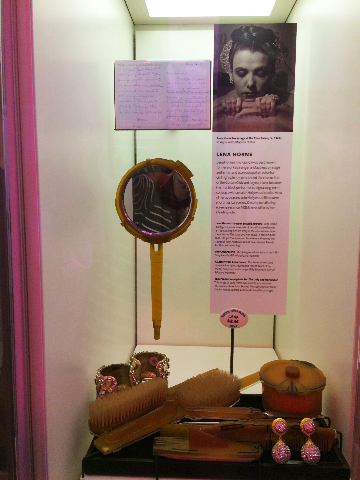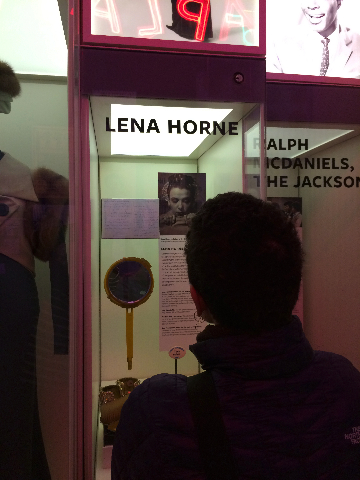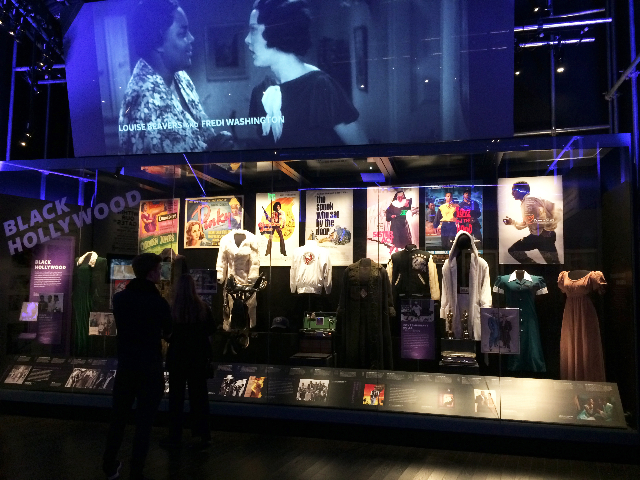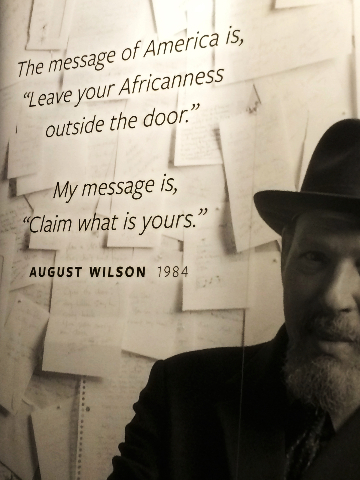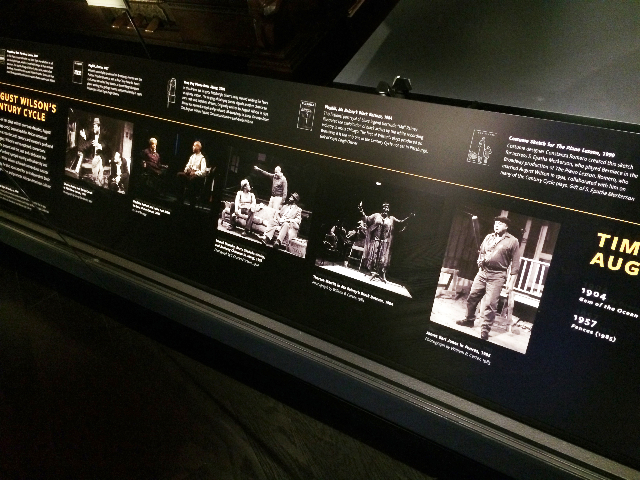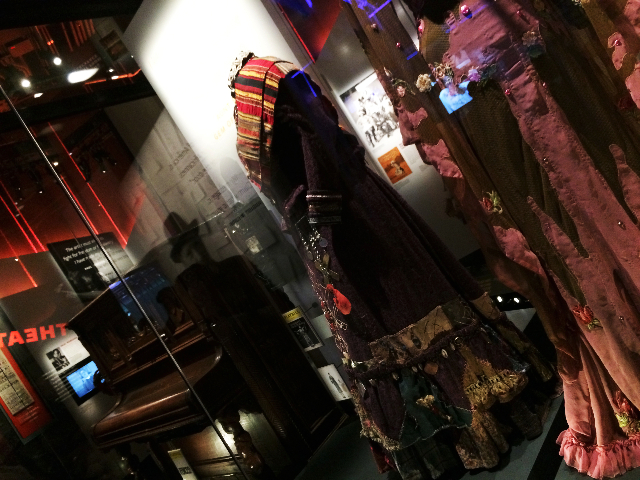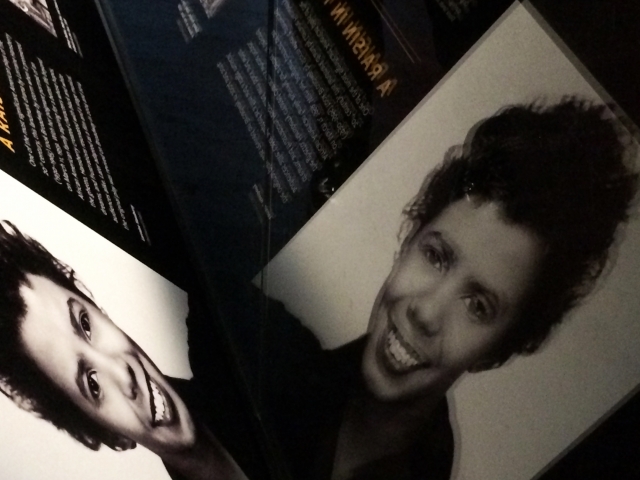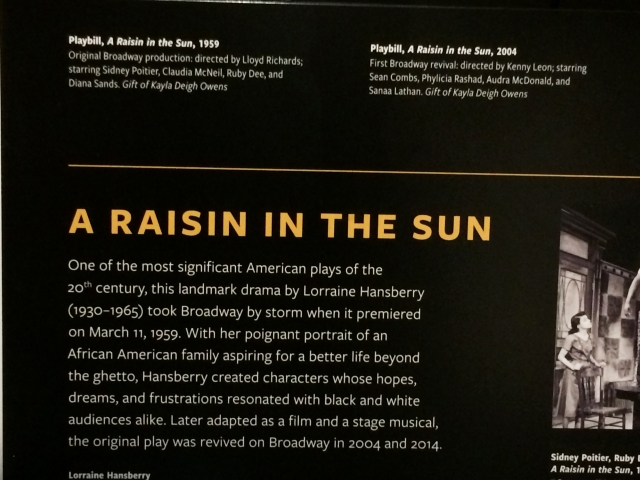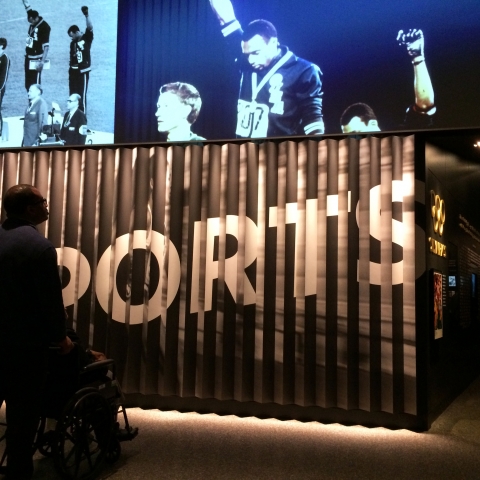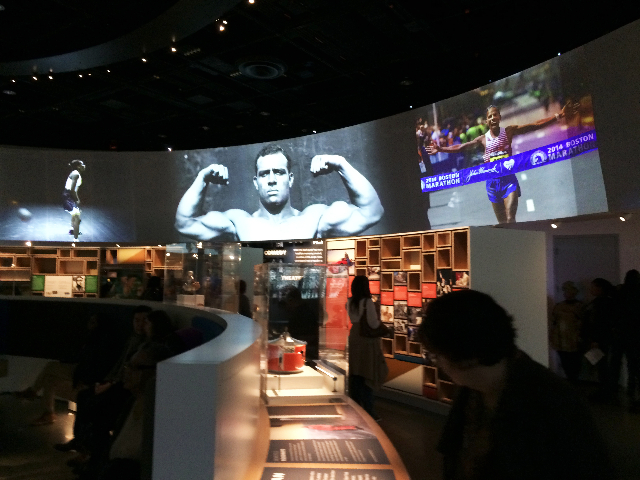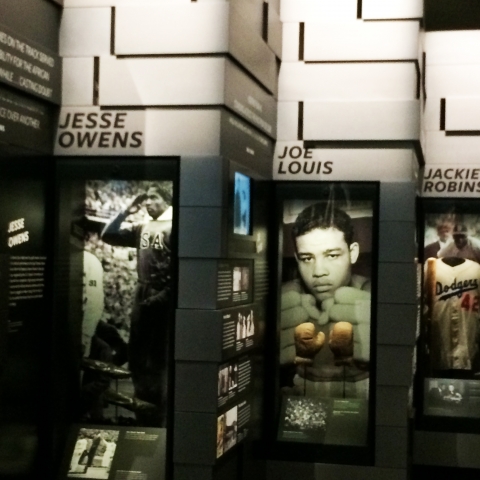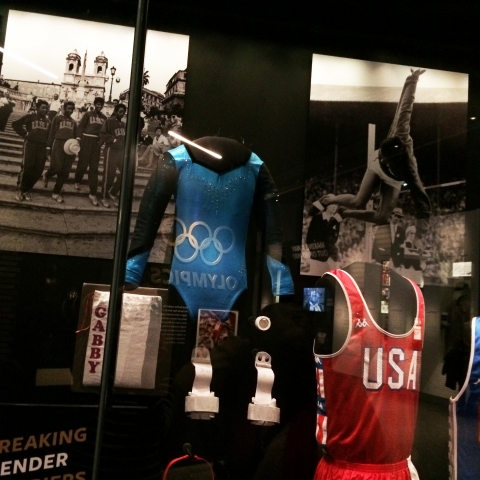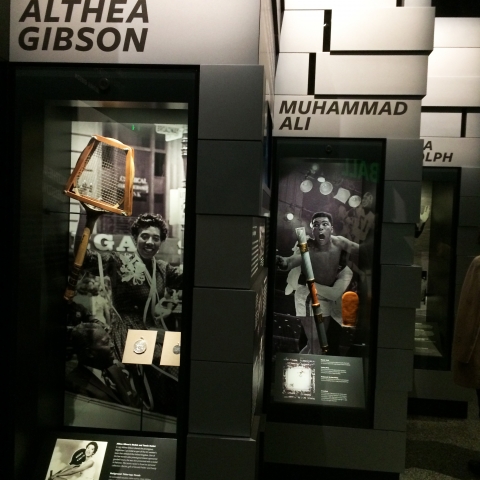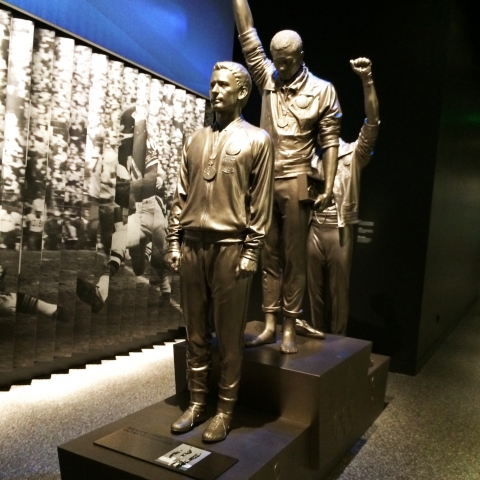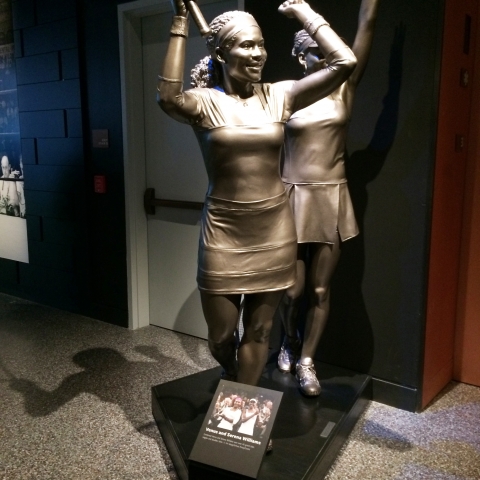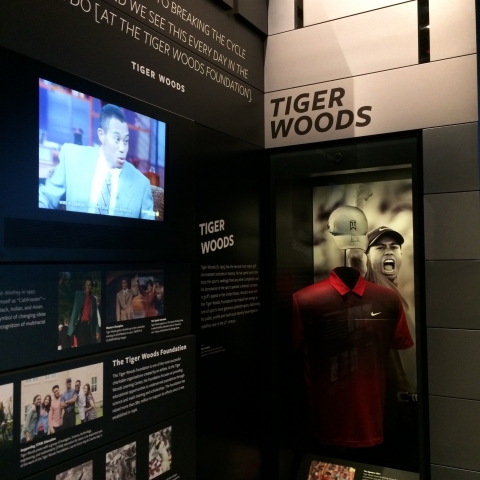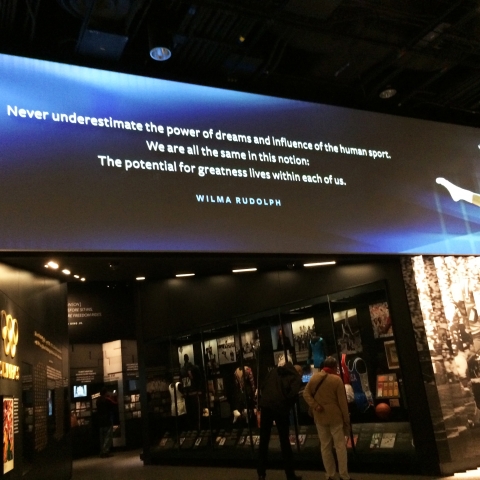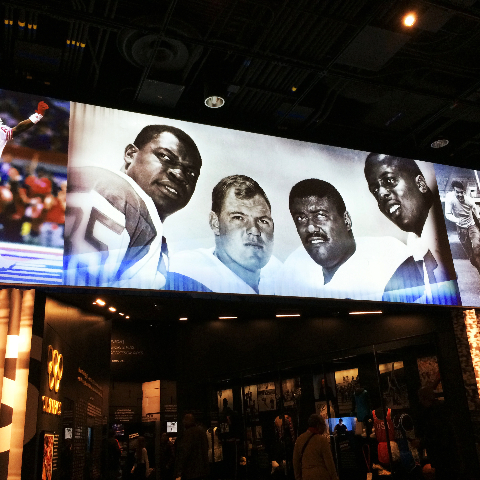National Museum of African American History and Culture in Washington, DC
A Visual Journey Through History
By: Astrid Hiemer - Dec 18, 2016
Under the auspices of Smithsonian Museums, President Barack Obama officially opened the National Museum of African American History and Culture (NMAAHC) on September 24, 2016, on the Washington Mall. The museum’s opening festivities lasted a full week. Founding director, since 2005, of NMAAHC is Dr. Lonnie G. Bunch III. Architects and designers are Freelon Group/Adjaye Associates/Davis Brody Bond, chosen by the museum’s board of trustees among six finalists to build and design the museum with four stories below ground and four stories above ground. It totals more than 300,000 square-feet and cost more than $500 million. Efforts to build a national African American Museum goes back to 1915 and after one hundred years it has become a marvelous success.
Standing under an umbrella one early December morning with Olivia Smith, my daughter, our great anticipation was just fine. One has to arrive approximately an hour before museum opening, now part of a ritual, if you have not made free of charge reservations months in advance and visitors come from around the world. There were 20 people ahead of us and perhaps 70 behind us by 9 am. A lady appeared with a stack of tickets by 9:15 am. We had learned from a woman ahead in line, that circa 100 tickets are available every morning; she had waited once before.
We did not linger after we received our 10:30 am timed tickets, instead headed for the next Starbucks to warm up. It was a chilly day. Olivia and Nola, her daughter, were invited during the inaugural week. The family had become an early supporter of the museum. Ed Ungvarsky, Olivia’s husband, had been away on business. Olivia was glad to visit the museum again; the depth of information that the exhibitions provide is immense.
A bronze colored metal frame with three distinct upward pointing parts encase the square building. The frame, an oversized filigree-like metal work, gives reference to African roots and examples of it can be found in southern States. The building looks majestic and lit by sun it must be sparkling. We entered the museum and found ourselves in a huge entrance hall with a long golden sculpture high above our heads. We stored our belongings in a locker and at the information desk helpful volunteers assisted us, suggesting, to visit the History Sections first on three floors below, if the entrance line was not too long. Otherwise, there are two floors above ground level where arts, entertainment and sports can be enjoyed. Another floor contains a large space for contemplation, enhanced by falling water.
With such good advice we headed down the escalator. There we waited only a few minutes; a friendly guide in the spacious elevator explained the layout of the exhibitions on three levels, each connected via ramps. Seats to rest are only available in spaces adjacent to the ramps and films and videos were streaming continuously. Just a note, bathrooms in this section of the museum are only on the lowest floor.
And so we walked into dark areas, where the African American History, beginning with slavery, is laid out in great detail and specific time-lines. No great evil can flourish without a vast network of collaborators! Slavery existed within a large network of collaborators from Africa, all over The Americas and Islands, and Europe. (I say that as a German-American, who grew up in Hamburg, Germany, ‘After The War, WW II.’)
Wall panels and glass-vitrines show detailed information or hold artifacts in condensed spaces. Sculptures and large-scale exhibitions take up three story tall areas adjacent to the relatively dense areas. In fact, a railroad wagon from Chattanooga, Tennessee, which was used during the Jim Crow era and a WWII PT-13D Stearman training aircraft for the Tuskegee Airmen were stored in place, and the museum was built around them.
NMAAHC holds currently 37.000 documents, media and artifacts and several thousands are on view. An overwhelming amount of photos and videos are changing in many locations constantly. To keep technology working has to be a challenge. We did not encounter any problems. Banners, wall spaces, the lunch counter and a big glass table with moving photos that are accompanying short stories, submitted by the general public, have been dedicated to well known and lesser known people’s statements. A spacious room for contemplation on the second floor is a welcome space to consider the immense material and visual information.
Next to the Oprah Winfrey Auditorium, which was closed, we had lunch at the Sweet Home Cafe, which offers delicious soul food from different regions. Olivia’s assessment: The auditorium is stunning with very comfortable seating and African themes inspired wood-carvings. Winfrey was so honored, because of her single largest donation by an individual. The museum received many other million-$ donations during the building phase.
After lunch we headed to the upper floors that present African American contributions, an integral part of our US culture at large. Beautifully executed and loudly proclaimed and, yes, uplifting!
This photo essay contains 100 plus photographs, more than I have ever contributed to any of my BFA projects. My own words cannot adequately convey, what the NMAAHC is presenting to the world. And, this is only an excerpt of the entire experience.
A deeply sad experience! And while there I wondered, with trepidation, in what direction the USA is heading politically, historically and culturally after January 21, 2017 with a different President and a newly elected Congress.
The day also gave us greatly gratifying experiences!




